Some people call Lisbon the San Francisco of Europe. Clearly, Lisbon is much older than San Francisco. There are some very obvious and undeniable similarities between the two cities, and some similarities that are lesser-known.
Lisbon and San Francisco both have red suspension bridges
San Francisco’s Golden Gate Bridge has 746-foot-tall towers. It spans one mile across the Golden Gate Strait, connecting San Francisco and Marin Country.
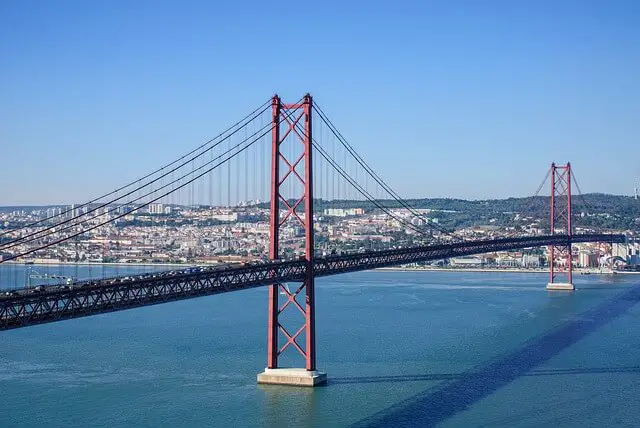

Designed in 1917 by Joseph Strauss, when it opened in 1937, it was the longest and tallest suspension bridge in the world – at a main span of 4200 feet and a height of 746 feet.
The 25 de Abril Bridge also has a height of 746 feet. It is also painted in the same International Orange color as the Golden Gate Bridge. It was built by the American Bridge Company, which also built the San Francisco – Oakland Bridge (but not the Golden Gate Bridge).
Construction began in 1962 and the bridge opened in 1966 as the Salazar Bridge.
Originally named after Antonio de Oliveira Salazar, the name changed in 1974 in honor of the peaceful Carnation Revolution, which overthrew the holdovers from Salazar’s dictatorship and ushered in democracy on April 25, 1974.
For more information on Lisbon’s bridges, read my article A guide to Lisbon’s most famous bridges
San Francisco and Lisbon both have seven hills and steep inclines
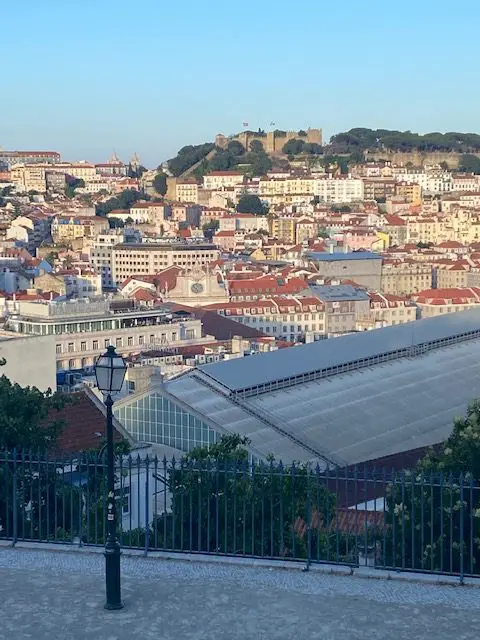
Both Lisbon and San Francisco are built on seven hills. Lombard Street in San Francisco is the world’s most crooked street. The street, which has many switchbacks, is also known for hosting a crazy Big Wheel race on Easter Sunday.
Both cities have streetcars, cable cars, trams, or trams
Andrew Hallidie, a Scottish mining engineer and wire rope manufacturer, invented San Francisco’s first cable car after watching horses struggle to pull a passenger carriage up a steep hill in 1869. Construction on the cable railway jokingly referred to as “Hallidie’s Folly,” began in 1872.
Lisbon owns 57 vehicles. Among them are six trams and three ascensores (funiculars or elevators).
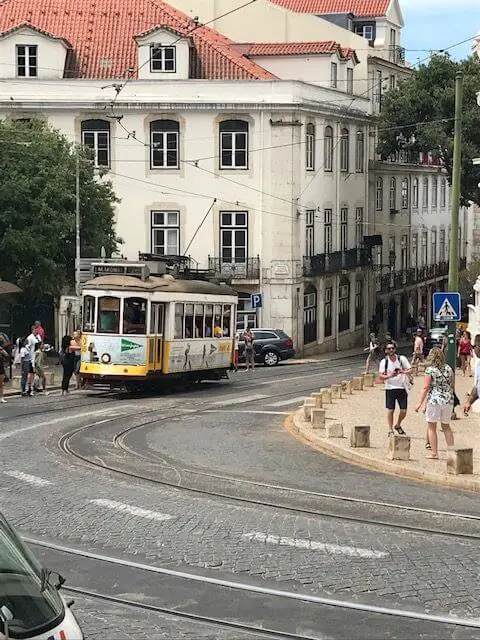
In 1873 Lisbon was using horses to pull carriages on the flat land. Steam-powered cable cars started running uphill in 1890, based on designs by Portuguese engineeer, Raoul Mesner du Ponsard.
In San Francisco service went electrical in 1892. Lisbon went electric in 1901. Deaths occurred in accidents in both cities when the street cars were powered by horses and steam.
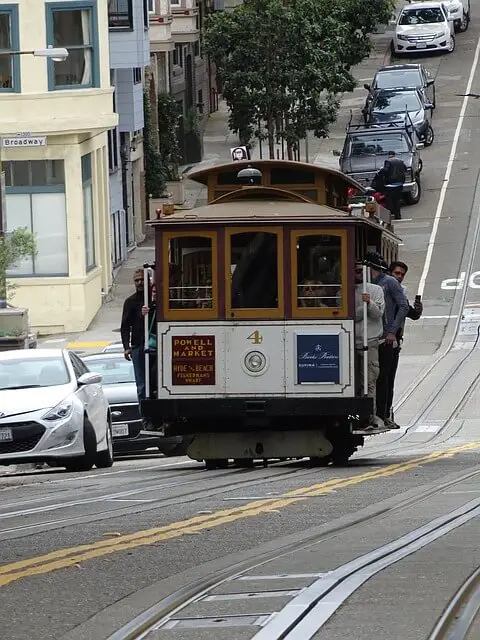
San Francisco at one time had 23 cable car lines. Today there are only three. At one point Market Street had five lines running on it. The fleet of cable cars is down from 600 to 48 cars.
The cable cars keep a consistent speed of 9.5 miles per hour, whether going uphill or downhill. They weigh more than 15000 lbs.
Mayor Roger Lapham tried to get rid of the system in 1947 due to expenses. The San Francisco cable cars are the only “moving national landmark” in the United States. For more information on Lisbon’s streetcars and funiculars, see my article, How to ride Lisbon’s trolleys, cable cars, elevators, and buses
Both Lisbon and San Francisco were destroyed by earthquakes
In 1906 San Francisco was hit by a 7.9 magnitude earthquake. The quake ended up causing fires all over the city. More than 80% of the city was destroyed and more than 3000 died.
Lisbon was nearly totally ruined by an earthquake on All Saints Day, November 1, 1755. Known as the most devastating earthquake to ever hit Europe, scientists estimate that it would have been an 8.4 on the Richter Scale.
The 1755 earthquake was one of the first that was studied by scientists, and it pioneered anti-seismic engineering.
The quake triggered a tsunami, and candles fell and caught fire all over the city. It is estimated that thirty to forty thousand died.
Much of the medieval character of Lisbon was lost, and the town used the earthquake as an excuse to modernize itself.
Lisbon’s newest museum, Quake Earthquake Experience, is an interactive experience that teaches about the history and science related to Lisbon’s earthquake.
Iconic central parks in both cities
Lisbon’s Parque Eduardo VII was named after England’s Edward VII who visited Lisbon in 1903 in order to reaffirm the Anglo – Portuguese Alliance, the longest-standing military alliance in the world.
The park slopes down toward the Monument to Marquês de Pombal (the man who rebuilt Lisbon after the earthquake), and offers great views of the river beyond that. Learn more in my article Parque Eduardo VII | Lisbon’s Central Park – What you should know
Located at the northern end of Avenida da Liberdade, the park can be accessed from the Parque Metro Station or the Marquês de Pombal station.
San Francisco’s much larger Golden Gate Park, in the shape of a rectangle, spans three miles in length (roughly half-way across the city) and a half mile in width.
Not just LGBT-friendly, San Francisco and Lisbon are both leaders in LGBT rights
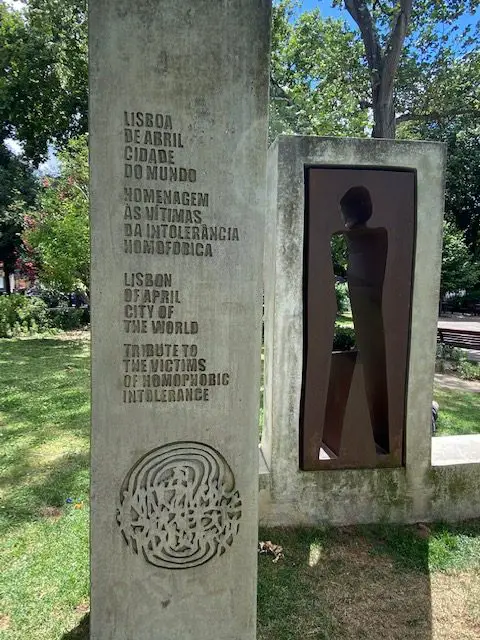
Both of these cities are a safe and friendly space for the gay community.
San Francisco’s Castro neighborhood is the most gay-friendly neighborhood in the United States, and Lisbon’s Bairro Alto / Príncipe Real also has a high number of businesses that cater to the gay community.
Both of these progressive cities have led the fight for human rights for LGBT people.
Both cities have a Chinatown
With its huge Chinese-American population of more than 150,000, San Francisco has one of the largest and busiest Chinatowns in the world.
With a Chinese population of under 10,000, Lisbon’s Chinatown is tiny in comparison, but still charming. The center of these Chinese markets, stores, and restaurants is a large Chinese food court and grocery store near Martim Moniz metro station.
Each city is known for its distinctive architecture
San Francisco is known for its Painted Ladies – Victorian era mansions, like the type the Grateful Dead lived in at 710 Ashbury Street.
Many of these houses were wiped out during the fire, but quite a few still stand today.
Lisbon is mostly recognized by the old white houses with orange terracotta roofs in the Alfama district which were spared by the earthquakes.
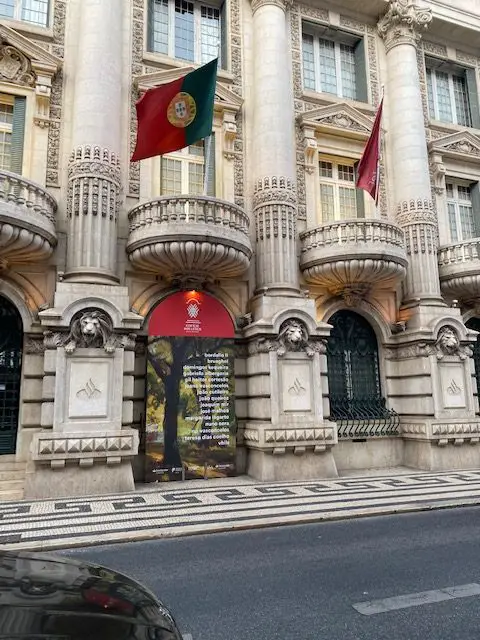
Also, the older buildings of the Baixa neighborhood are mostly all built in the Pombaline architectural style. Following the 1531 earthquake, the Baixa (Downtown) was wiped out as a tsunami washed through Lisbon’s low-lying and highly populated valley. Lisbon’s downtown – Baixa: Everything you need to know
The Marquês de Pombal was tasked with quickly rebuilding the Baixa neighborhood.
A military man, he rebuilt the neighborhood with large, earthquake-proof, stark-looking buildings in an intimidating-looking military style.
Everything was laid out in a grid and looked very uniform.
But the buildings went up quickly and still stand today, outlasting later earthquakes.
Both cities have world-class street art

San Francisco has the beautiful murals of the Mission District.
Lisbon has urban art scattered all around the city, and it also has its two-mile-long Blue Wall, and large mural projects in the Marvila and Padre Cruz neighborhoods.
These huge projects were all initiated by local artists and city visionaries – Galeria de Arte Urbana. Back in California, the Mission district murals were inspired by local artists and homeowners who teamed up.
For more information touring the murals of Lisbon, see my article, Unique tours and experiences in and near Lisbon
Lisbon and San Francisco both have amazing food
San Francisco and Lisbon are both considered gold mines for foodies. Each city has a large immigrant population, which contributes to a huge variety of international restaurants. Read my Best places to try ethnic food in Lisbon
They are both close to very productive farmland, ensuring plenty of fresh local ingredients.
With one city on the Pacific and the other on a river a few miles from the Atlantic, both cities offer a lot of fresh seafood on menus.
If you are interested in trying seafood in Lisbon, I share my favorite restaurants in this article, Finding the best seafood in Lisbon
Lisbon currently has twelve restaurants with Michelin Stars, as well as one more in nearby Cascais. Introducing Lisbon’s Michelin Star Restaurants, 2022 edition San Francisco has 124 Michelin restaurants!
Both cities are vegan-friendly. Some grocery stores in Lisbon carry vegan products such as tofu, seitan and vegan meat products. There are many vegan restaurants in Lisbon. See my article on vegan restaurants in Lisbon, How to fit vegan restaurants into a day of site-seeing in Lisbon
Lisbon and San Francisco both have football dynasties
The San Francisco 49ers won five Super Bowls between 1981 and 1995.
Since 1904, Sport Lisboa e Benfica has 37 Primeira Liga titles, 26 Portugal Cups, 7 League Cups, 8 Cândido de Oliveira Supercups, and 3 Campeonatos do Portugal. The winningest team in Portugal, they have also factored into a handful of UEFA and European Championships as well. How to go to a Benfica game
Crosstown rival Sporting, Christian Ronaldo’s former team, is no slouch either. They are also one of Portugal’s top teams, you might want to go to a Sporting game or tour Estádio José Alvalade.
Lisbon and San Francisco both have world-class aquariums
Located on the waterfront at Pier 39, San Francisco’s Aquarium on the Bay https://www.aquariumofthebay.org/ has more than 20,000 marine animals. 80% of every dollar spent at the aquarium goes back into research and caring for the animals.
Lisbon’s Oceanário has more than 450 marine species and is the largest aquarium in Europe. Lisbon Oceanarium | Plan Your Visit to the Oceanário de Lisboa
Admission is only 13 euros.
The aquarium is located at Doca dos Olivais, Parque das Nações. The Oriente (East) station is the closest metro station.
Fisherman’s Wharf and Mercado da Ribeira / Time Out Market
Lisbon and San Francisco both depended on the sea to feed their populations. The spots where the fishermen always labored have over the years become some of the most popular destinations in each city.
Originally the docks for the Italian and Chinese fisherman in San Francisco, Fisherman’s Wharf is now a great family-friendly destination with tons of restaurants, museums, street performers, bars, boat tours, and displays. A great place to find Dungeness crab, shrimp, or clam chowder.
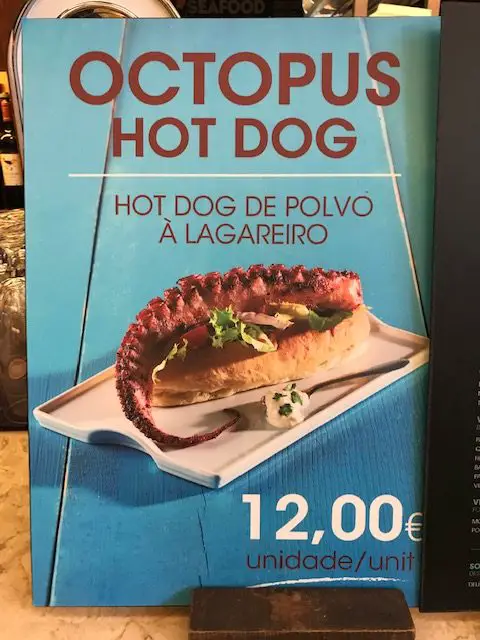
Lisbon’s Time Out Market is an extremely popular food hall that has been open since 2014. With three Michelin-star chefs within the building, it is a favorite tourist destination. You can also check out the attached Mercado da Ribeira (Riverside Market) and see where the chefs are getting their produce and seafood. There has been a seafood market on this spot since 1892. For more information, see my article Lisbon’s Time Out Market | Everything you need to know
Christianity has played a huge role in the history of each city
Lisbon was probably first settled by the Celts, and later occupied by the Greeks, the Phoenicians, the Romans, and other tribes. Much of the Roman infrastructure still lies buried beneath the Baixa neighborhood and is open for tours occasionally.
In 714 the settlement was overtaken by the Moors, and many of the locals converted to Islam.
At the time, the Moors occupied at least the southern half of the entire Iberian Peninsula, occupying everything between the Mediterranean Sea and the Atlantic Ocean. Christians were pushed into the northern half of the Iberian Peninsula.
In 1147, Christain Crusaders led by Afonso I seized Lisbon from the Muslem Moors after a four-month battle.
The Christians continued to hold Lisbon, and in 1256 Lisbon became the capital of Portugal.
San Francisco, on the other hand, was founded by Spanish Christian missionaries in 1774.
Points of entry to the wine country
There are over one million acres of vines in Portugal. California has 918,000
acres of grapes.
Incidentally, Portugal is 35,603 sq mi. California is 163, 696 sq mi.
Everyone is aware of the fortified Port wine that comes from the Douro valley in the north, near Porto. But different wines are all over Portugal.
From the Minho region, there is Vinho Verde. The name says green, but it is actually a white wine.
The hot and dry Alentejo region, southeast of Lisbon, produces reds.
The Setúbal peninsula, south of Lisbon, is famous for Moscatel de Setúbal, but also produces reds and whites.
Interested in wineries you can visit near Lisbon? See my article, 18 wineries and vineyards you can visit near Lisbon, Portugal
Growing and diverse populations
Both cities have had population booms and attracted immigrants from all over the world.
One factor is the pleasant climate in both cities.
Both cities have a reputation for tolerance and being progressive.
San Francisco has its high-paying tech jobs.
Lisbon has very low prices compared to European capitals such as London, Paris, Berlin, and all of the others in western Europe. While rents in Lisbon are high, food is cheaper than in the United States.
Both are coastal cities with pleasant climates
San Francisco is on the west coast of the United States on the Pacific Ocean. Lisbon is on the west coast of Europe, situated on the Tagus River, which empties into the Atlantic Ocean just a few miles away. Both cities have strategically important harbors.
Lisbon is hot and dry and receives 300 days of sunshine per year. Summers are hot and sunny, but nights can be cool.
San Francisco is almost always cool, with high temperatures ranging from 60 in January to 83 in August.
Lisbon’s temperatures go from highs of 52 in January to 83 in August. Summer is hot and sunny.
Are you planning a trip to Lisbon and looking for things to do? Check out my article, 205 Things to do in Lisbon – The Ultimate Guide
Thank you for reading 17 Ways That Lisbon and San Francisco Are Alike.